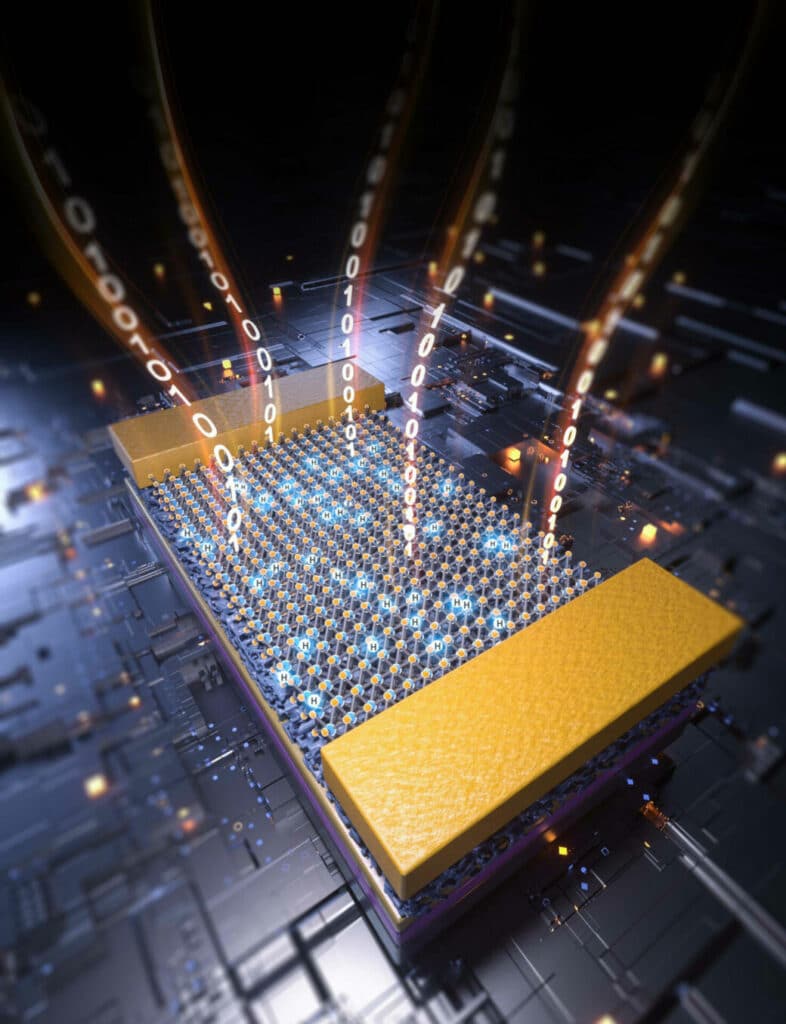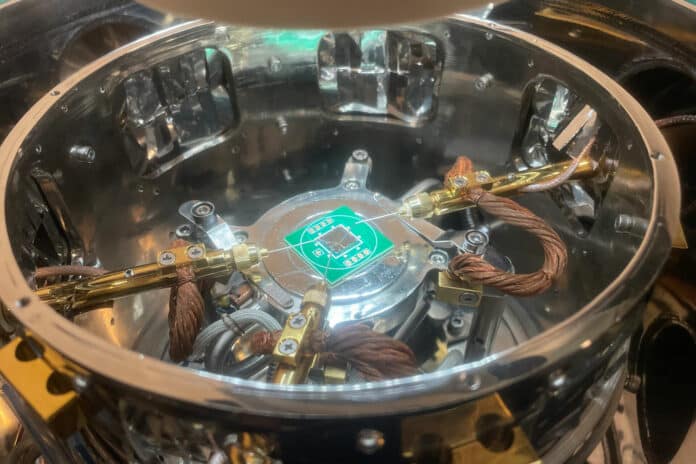A KAUST-led international team has found that a proton-mediated approach that produces multiple phase transitions in ferroelectric materials could help develop high-performance memory devices, such as brain-inspired or neuromorphic computing chips.
In recent decades, research on ferroelectric materials has led to the development of data storage devices. Ferroelectric materials are intrinsically polarized materials that switch polarity when placed in an electric field, making them attractive for creating memory technologies. The resulting memory devices display excellent maximum read or write endurance and write speeds and require low operating voltages. But their storage capacity is low.
“This is because existing methods can only trigger a few ferroelectric phases, and capturing these phases is experimentally challenging,” says Xin He, who co-led the study under the guidance of Fei Xue and Xixiang Zhang.
The new method relies on the protonation of indium selenide to generate a multitude of ferroelectric phases. It consisted of the ferroelectric material incorporated in a transistor consisting of a silicon-supported stacked heterostructure for evaluation.
The researcher deposited a multilayered indium selenide film on the heterostructure, comprised of an aluminum oxide insulating sheet sandwiched between a platinum layer at the bottom and porous silica at the top. The platinum layer served as electrodes for the applied voltage, and the porous silica acted as an electrolyte and supplied protons to the ferroelectric film.

By changing the applied voltage, the team then gradually injected or removed protons from the ferroelectric film by changing the applied voltage. This resulted in several ferroelectric phases with various degrees of protonation, which is crucial for implementing multilevel memory devices with substantial storage capacity.
Higher positive applied voltages boosted protonation, while the negative voltages of higher amplitudes depleted protonation levels to a greater extent. The levels also varied depending on the proximity of the film layer to the silica. The maximum values were reached in the bottom layer, which was in contact with silica and decreased in stages to achieve minimum amounts in the top layer.
Surprisingly, the proton-induced ferroelectric phases returned to their initial state when the applied voltage was turned off. “We observed this unusual phenomenon because protons diffused out of the material and into the silica,” Xue explains.
The team then manufactured a film that displayed a smooth and continuous interface with silica, resulting in a high proton-injection efficiency device that operates below 0.4 volts, which is key for developing low-power memory devices.
“Our biggest challenge was to reduce the operating voltage, but we realized that the proton-injection efficiency over the interface governed operating voltages and could be tuned accordingly,” Xue says. “We are committed to developing ferroelectric neuromorphic computing chips that consume less energy and operate faster.”
Journal reference:
- Xin He, Yinchang Ma, Chenhui Zhang, Aiping Fu, Weijin Hu, Yang Xu, Bin Yu, Kai Liu, Hua Wang, Xixiang Zhang, Fei Xue. Proton-mediated reversible switching of metastable ferroelectric phases with low operation voltages. Science Advances, 2023; DOI: 10.1126/sciadv.adg4561
